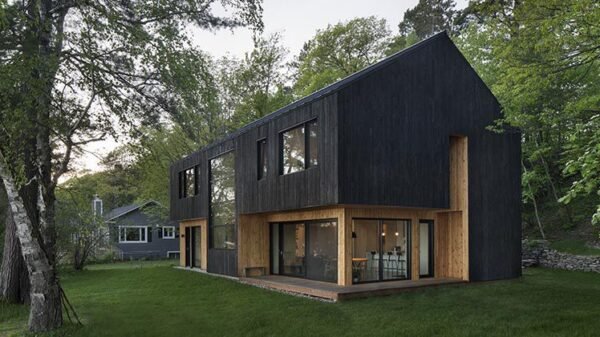In recent years, there has been a growing movement towards a simpler and more sustainable way of living – the tiny home movement. With the rising cost of housing and the desire to reduce our carbon footprint, many people are opting for smaller, more efficient living spaces. In this blog post, we will explore the concept of the tiny home movement and its benefits.
What is the Tiny Home Movement?
The tiny home movement is a social and architectural phenomenon that advocates for downsizing and living in smaller, more affordable homes. These homes are typically between 100 and 400 square feet in size, making them a fraction of the size of the average American home.
While the idea of living in such a small space may seem daunting to some, tiny homes offer a range of benefits that make them an attractive option for many. Let’s explore some of these benefits:
Affordability
One of the main reasons people are drawn to the tiny home movement is the affordability factor. Tiny homes are significantly cheaper to build and maintain compared to traditional homes. With lower mortgage payments, reduced utility bills, and fewer maintenance costs, tiny homeowners can save a significant amount of money in the long run.
Sustainability
Tiny homes are designed to be energy-efficient and environmentally friendly. With their smaller size, they require less energy to heat and cool, resulting in lower carbon emissions. Additionally, many tiny homes incorporate sustainable features such as solar panels, rainwater harvesting systems, and composting toilets, further minimizing their environmental impact.
Simplicity
The tiny home movement promotes a simpler way of life. By downsizing and decluttering, homeowners can focus on what truly matters to them. Living in a smaller space forces individuals to prioritize their possessions and live with only what they need, leading to a more intentional and mindful lifestyle.
The Rise in Popularity
The tiny home movement has gained significant traction in recent years, with more and more people embracing the idea of compact living. There are several reasons for this surge in popularity:
Financial Freedom
With the rising cost of housing, many people are finding it increasingly difficult to afford a traditional home. Tiny homes offer an affordable alternative, allowing individuals to own their own space without the burden of a large mortgage. This financial freedom gives people the flexibility to pursue their passions and live life on their own terms.
Minimalism Trend
The rise of the minimalist lifestyle has also contributed to the popularity of the tiny home movement. Many individuals are seeking to simplify their lives and reduce their material possessions. Tiny homes provide the perfect solution, offering a compact and clutter-free living space that aligns with the principles of minimalism.
Environmental Consciousness
As awareness of climate change and environmental issues grows, more people are looking for ways to reduce their carbon footprint. Tiny homes are an eco-friendly housing option that allows individuals to live in a more sustainable and environmentally conscious manner. By choosing a smaller living space, individuals can minimize their impact on the planet.
Challenges and Considerations
While the tiny home movement offers many benefits, it is important to consider the challenges that come with living in a small space. Some of these challenges include:
Space Limitations
Living in a tiny home requires careful planning and organization. Space is limited, and homeowners must be creative in maximizing every square inch. This may involve multi-functional furniture, clever storage solutions, and a minimalist approach to belongings.
Zoning and Legal Issues
Depending on the location, zoning laws and building codes can pose challenges for tiny homeowners. Some areas have restrictions on the minimum size of homes or require specific permits for tiny homes. It is important to research and understand the legal considerations before embarking on the tiny home journey.
Adjustment Period
Transitioning from a larger home to a tiny home can be an adjustment. It requires a shift in mindset and a willingness to embrace a simpler lifestyle. However, many tiny homeowners find that the benefits far outweigh any initial challenges.
Conclusion
The tiny home movement represents a shift towards a more sustainable, affordable, and intentional way of living. With its focus on simplicity, minimalism, and environmental consciousness, it offers a compelling alternative to traditional homeownership. While there are challenges to overcome, the benefits of the tiny home movement are undeniable. Whether you are looking to downsize, reduce your carbon footprint, or embrace a simpler lifestyle, the tiny home movement may be worth considering.


































